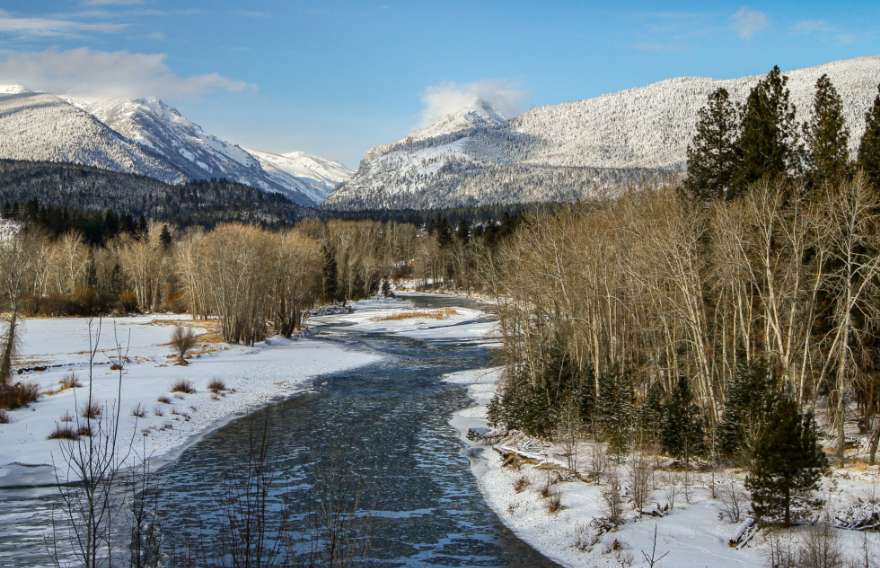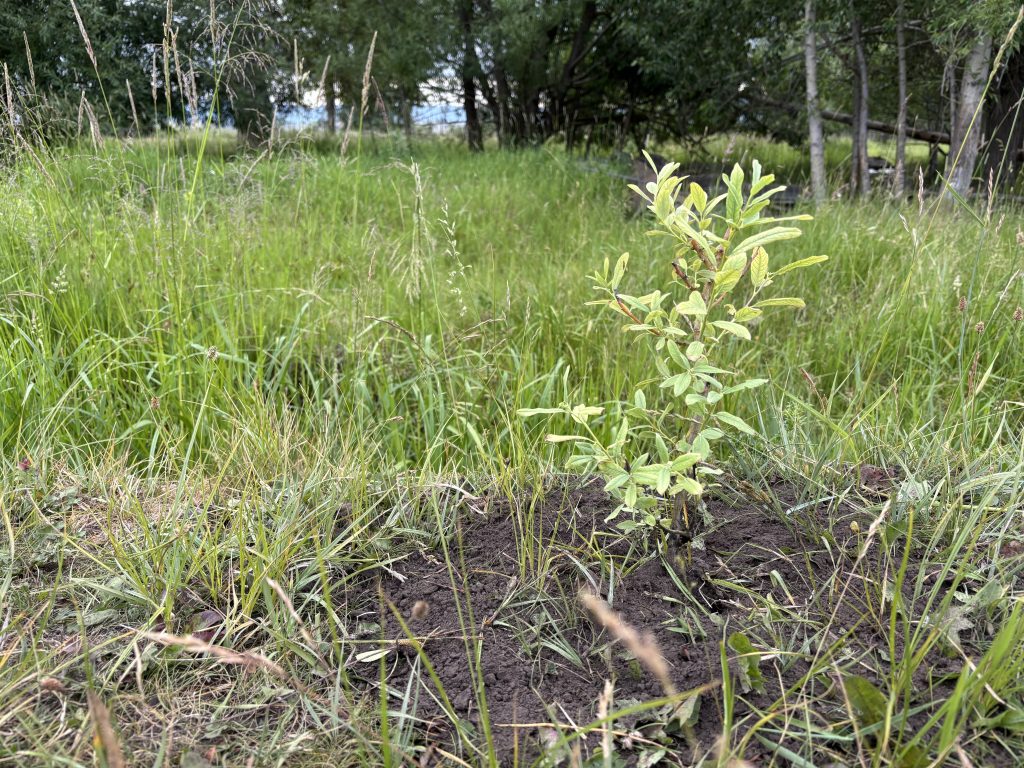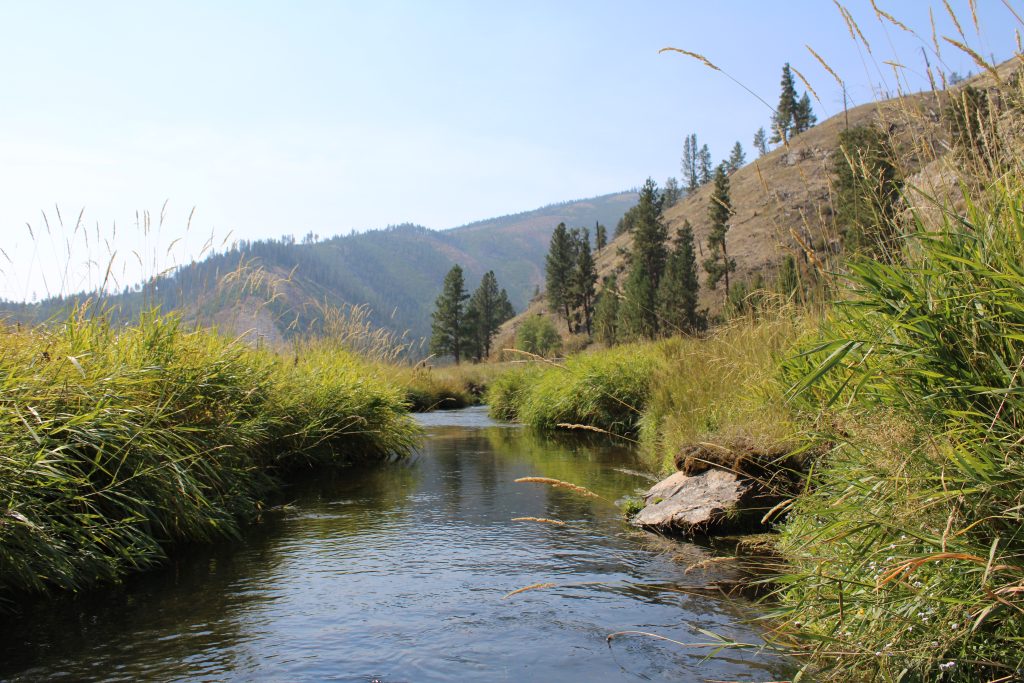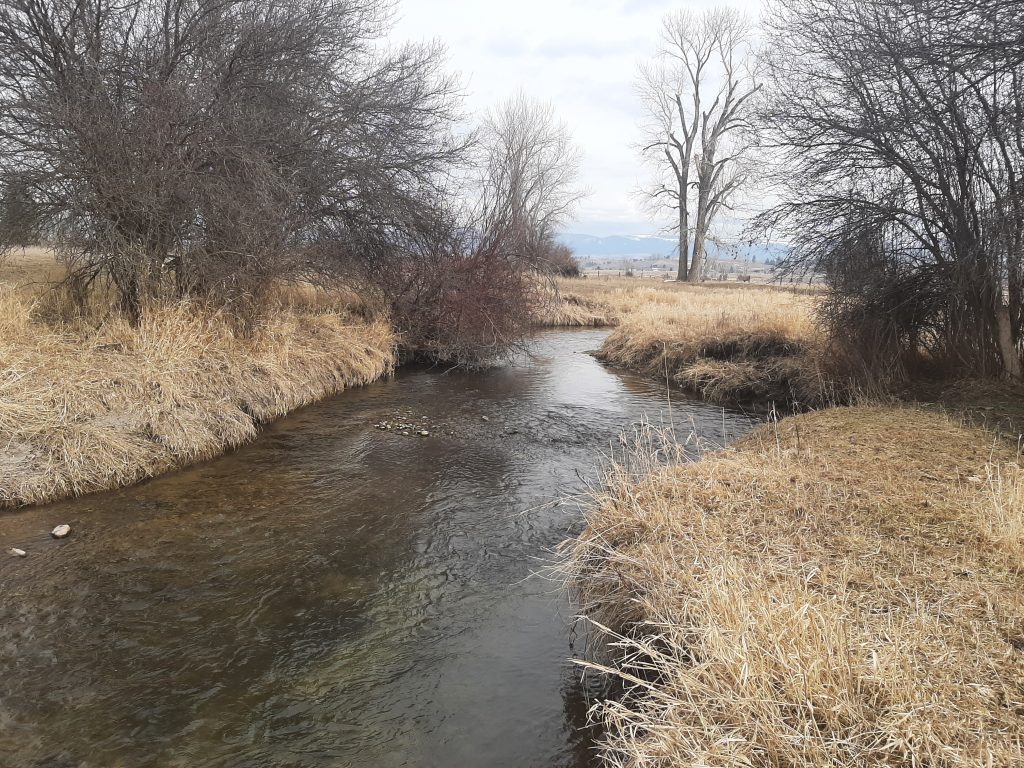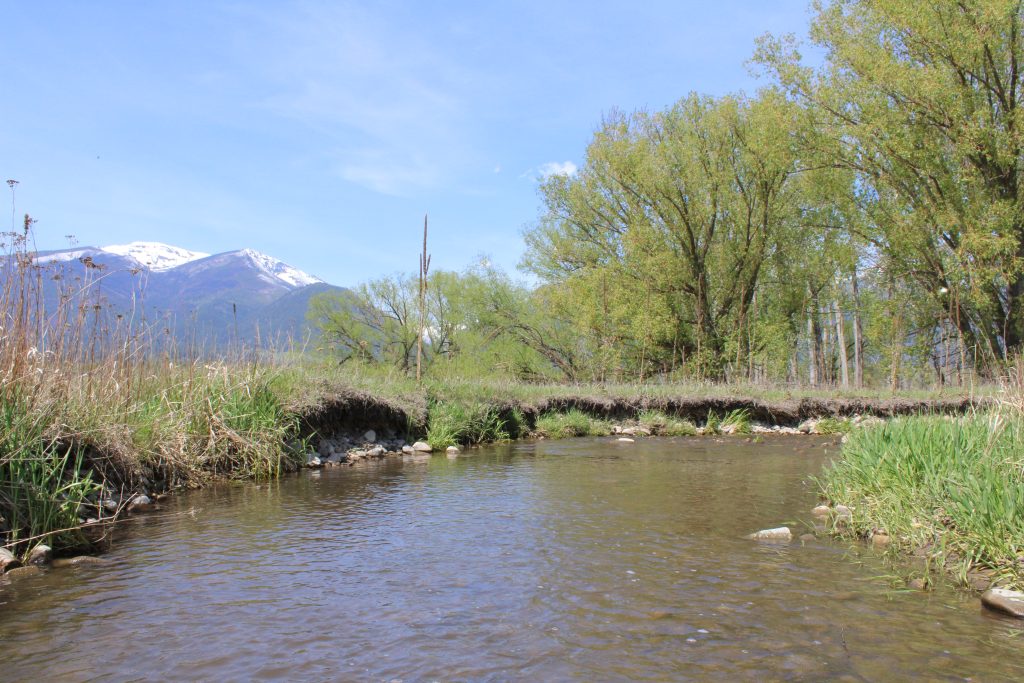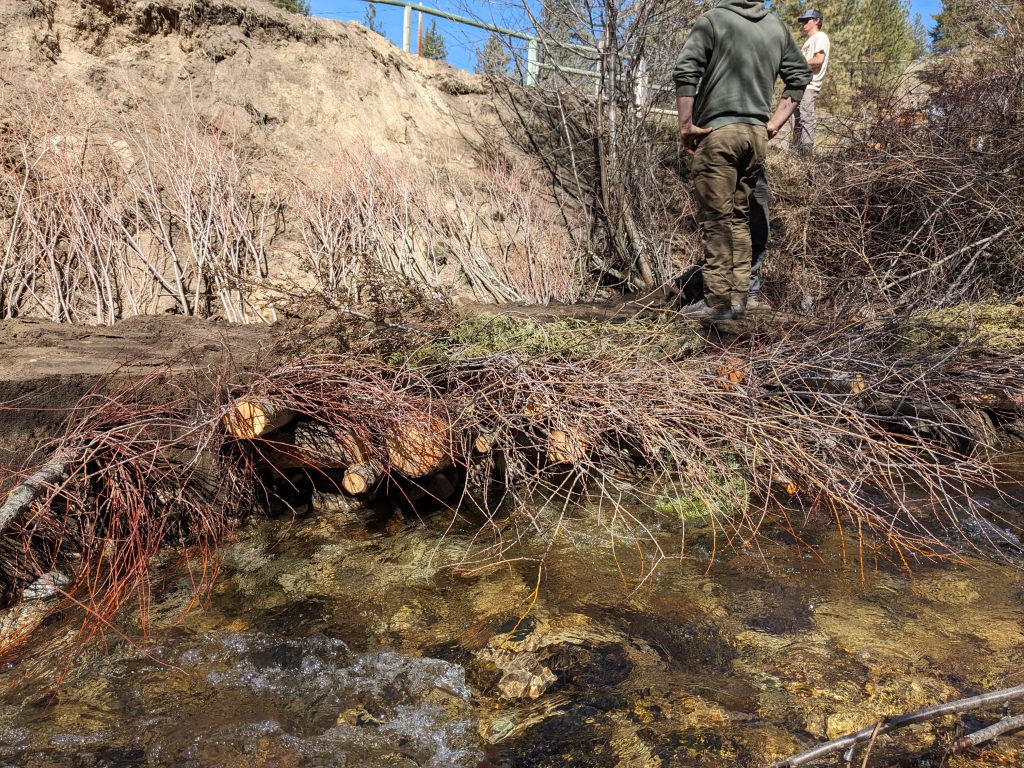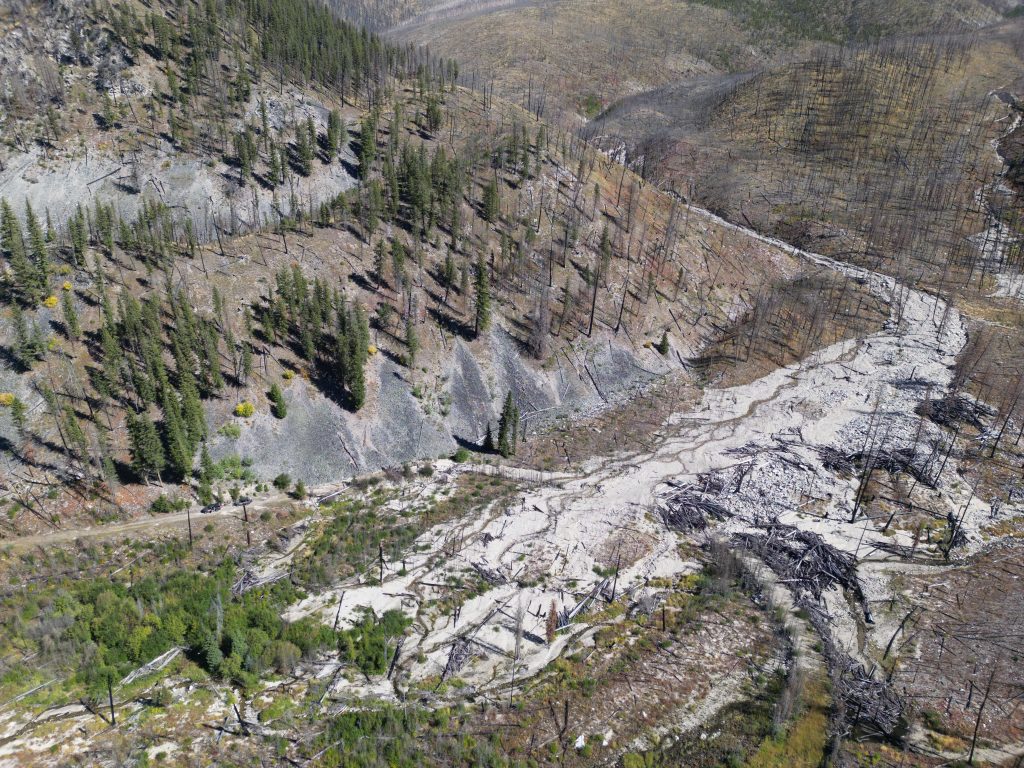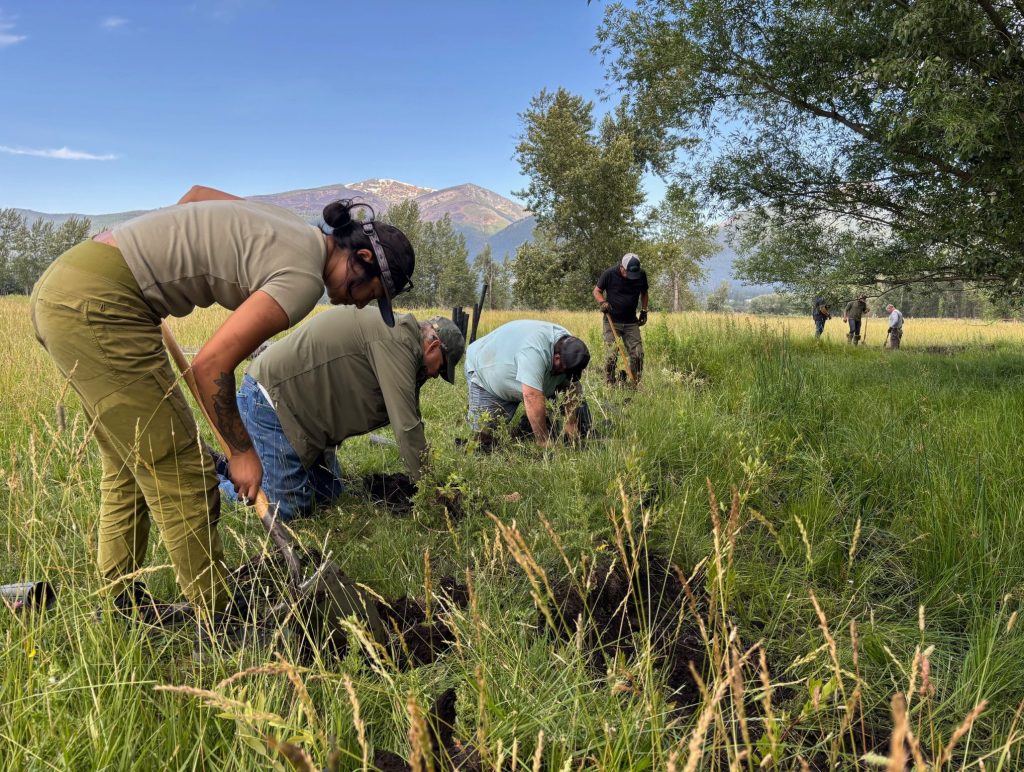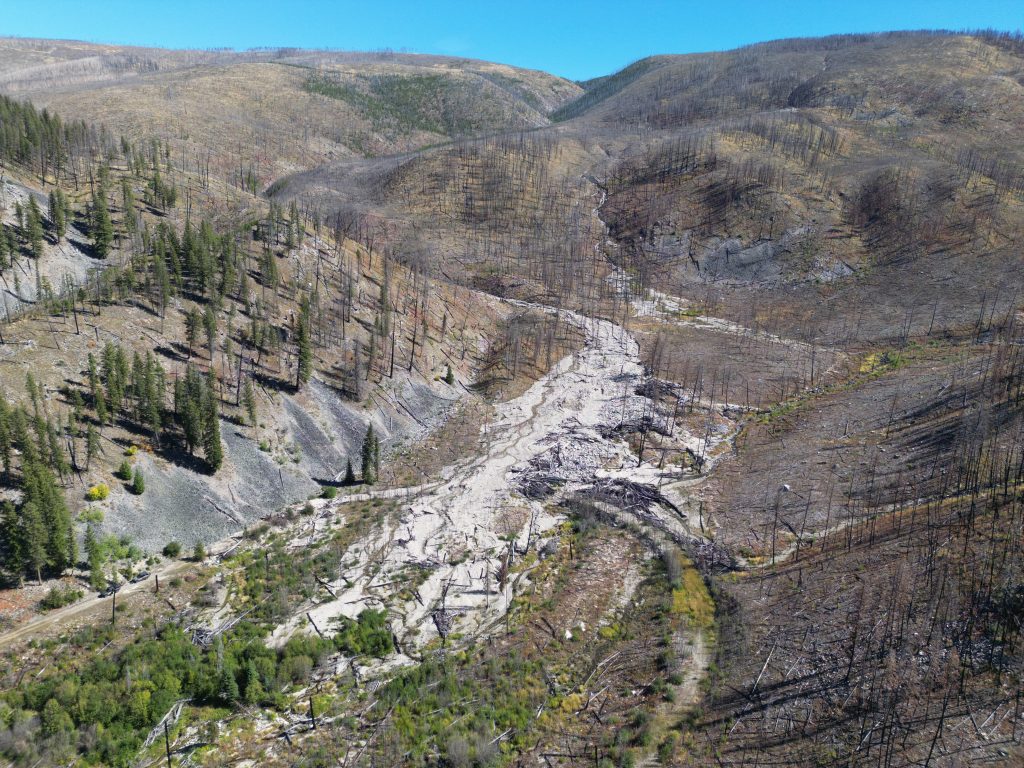Our Waters, Our Ways of Life
The Bitterroot Water Partnership leads reliable and intentional conservation initiatives that promote and provide clean, ample water for people and healthy habitats by working with key partners and our communities.
How we serve
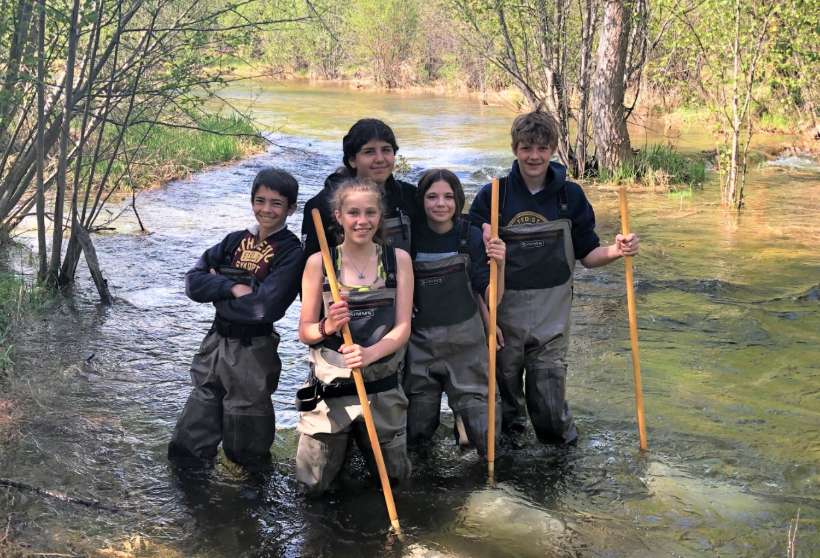
Restoration
Restoring private and public lands to enhance habitat, maintain clean & resilient waterways, and help landowners achieve management goals.
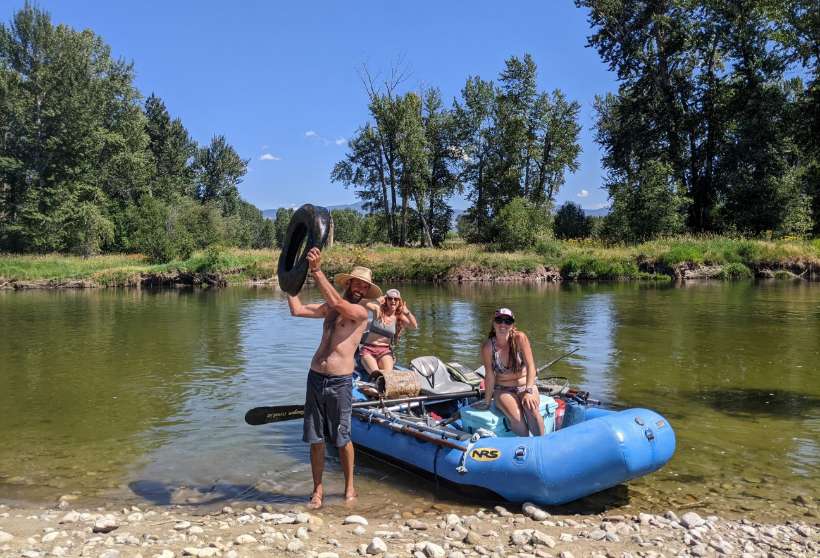
Building Community
Curating opportunities that help us connect to each other so we can work together to keep waterways clean and plentiful for the benefit of all.
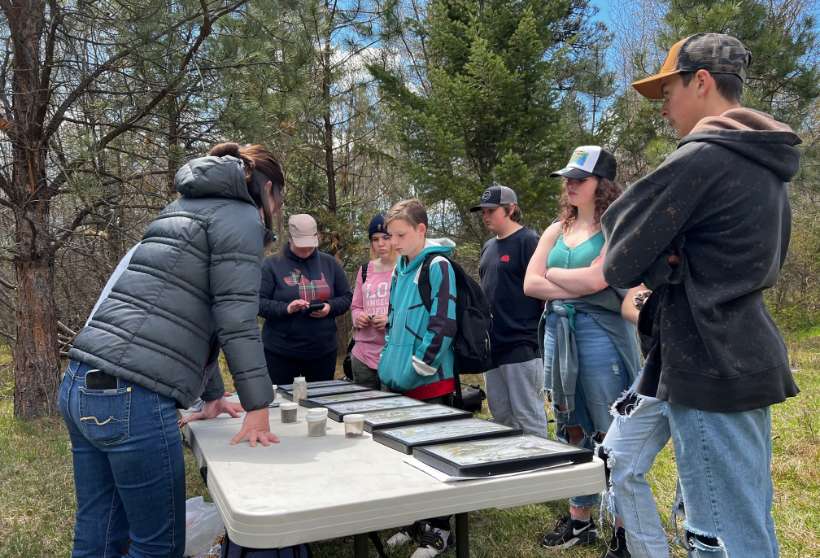
Learning
Hosting youth and adult learning programs to share the wonders and importance of water in the Bitterroot, and develop a community of stewards.
Recent Projects
North Burnt Fork, Johnson Ranch
Restoration of Streamside and Wetland HabitatNorth Burnt Fork Creek is listed as an impaired stream by Montana Department of Environmental Quality. This means the creek does not support the various uses/benefits of the stream. Currently, the creek fails to support aquatic life and recreational use because of much of it’s streamsidess are eroding, polluting the waterway with sediment and causing loss of land for landowners. And, the stream water temperature is warming, threatening survival of aquatic life. To reduce further sediment pollution and encourage lower water temperatures needed for native trout and other wildlife, revegetation of North Burnt Fork’s streambanks is recommended. Bitterroot Water Partnership will collaborate with the Johnson family to aid in revegetation of their reach of North Burnt Fork.
Cameron Creek – 2025
Streamside Restoration & Protective FencingCameron Creek is one of the warmest tributaries entering the East Fork of the Bitterroot River. Temperature is an important component of water quality, since most native fish species require cold, clear water. Cameron Creek has been historically de-vegetated, creating a lack of sufficient shading over the creek from streamside trees and shrubs – leading to warmer water and increased streambank erosion. The eroding streambank delivers fine debris and sediment to the stream, clogging up important breeding habitats and muddying waters.
The plants planted here will form thick webs of roots that hold land together, reducing erosion and sediment pollution. Importantly, they will also create shade to keep waters cool for thriving native fish and other aquatic life.
North Burnt Fork, MGY Ranch
Restoration of streamside habitatThis section of stream suffers from extensive bank erosion and lacks abundant native vegetation along its banks. In some areas, the stream is 6 feet below its historical floodplain (or its natural connection with surrounding land). One of the primary causes is a lack of native vegetation that would reduce erosion of silt into the stream. This natural vegetation would also provide shade, preventing harmfully warm water temperatures.
North Burnt Fork, Wild Fowl Lane Restoration
Stream Restoration and Irrigation ImprovementsNorth Burnt Fork Creek in Stevensville suffers from sediment pollution, warming water temperatures, and substantial loss of native vegetation along its streambanks. The Bitterroot Water Partnership has an opportunity to partner with a local landowner, The New Frontier Ministries, to enhance streamside vegetation along ~500 feet of the creek just west of the bridge on Wild Fowl Lane. The ministry group utilizes outdoor recreation such as fishing and hiking to mentor father-son relationships. Prioritizing habitat enhancement along the North Burnt Fork fulfills the mission of both organizations.
The project area was historically grazed and shows signs of non-native weed growth. The southern streambank in particular lacks common native vegetation that provides shade for the creek and habitat for a variety of wildlife, including native bull and cutthroat Trout present in the North Burnt Fork.
Restoration of streamside habitat will address many of this stream’s threats at once: they will grow roots to hold the bank together minimizing erosion, they will shade waters to keep them cool for aquatic life, and by slowing water they will help recharge groundwater.
Willow Creek Streamside Restoration
Streamside Restoration to Reduce Sediment PollutionWillow Creek is a perennial stream that flows west from the Sapphire Mountains and drains into the mainstem of the Bitterroot River. According to Montana DEQ monitoring, Willow Creek is degraded by sediment pollution and warming waters. Sediment is washing into the stream from unkempt gravel roads and eroding streamside banks. The project’s purpose is to restore the streamside to a more natural and functional state, improve aquatic habitat, and enhance streamside habitat to support wildlife and natural stream movement.
Tolan Creek, Headwaters to the East Fork
Deep Stream Restoration and Wetland Re-establishmentRead more in our blog, “The Water Was Chocolate Brown”: https://bitterrootwater.org/the-water-was-chocolate-brown/
Tolan Creek, a tributary to the East Fork of the Bitterroot River, was heavily impacted by the Trail Ridge Fire—which burned 62% of the watershed at moderate to high severity. The fire destroyed vegetation and soil organic matter, making the area highly susceptible to erosion, leading to widespread debris flows in 2023. The debris flows scoured riparian vegetation and caused the failure of several road-stream crossings, including a major culvert that is completely blocked with large woody debris. The significant sediment deposition in Tolan Creek is threatening aquatic habitats and increasing the risk of erosion and sedimentation in downstream reaches. The continued erosion of unstable debris fields could lead to long-term degradation of water quality and fish habitat in the East Fork Bitterroot River.
BWP staff first became interested in engaging in the Tolan Creek watershed after hearing from multiple community members in June 2023 about excessively “muddy” runoff in the East Fork. Speculation during the Cash for Cutthroats event was that a landowner upstream of Lazy J Cross was illegally using heavy equipment in the stream channel. Later that year, when visiting with a landowner on the East Fork, whose property contains the mouth of Tolan Creek, he told of the destruction and aftermath of the fires that created the sediment pulses and shared a video he took from a helicopter ride around the watershed.
Thanks to a partnership with the Bitterroot National Forest, BWP aims to restore the Tolan Creek watershed to a stable and functioning ecosystem that supports critical habitats for Bull Trout and westslope cutthroat trout. The area is also known for its elk hunting—the 2000 burns opened up the canopy and created a lot of good forage. During field visits partners have seen an abundance of moose, deer, and bear scat.
The project will improve water quality in the East Fork Bitterroot River, which is vital for local fisheries and recreation. The restored watershed will provide long-term ecological and economic benefits to the community by supporting critical habitat and the recreation economy dependent on cool, clean water—especially in the headwaters of the Bitterroot.
watershed wellness
From Muddy to Mighty – Restoring North Burnt Fork one Section at a Time
Dam! That’s Impressive. The HOW and WHY of Tolan Creek Beaver Dam Analogues
Community Perspective: Investing in the Future of Our Bitterroot Waters
“The Water Was Chocolate Brown”
The Bitterroot Watershed is complex and diverse.
Recent Projects
